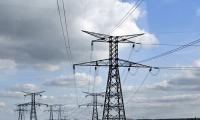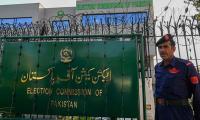The high hopes wrapped around the revival of a political system and the arrival of a young and energetic leadership have not been fulfilled. We may give any number of justifications as to why this has happened, but the fact remains that few runs were put on board as far as the implementation of economic reforms is concerned.
Many have labelled the period between 1988 and 1999 as a ‘lost decade’. It is so labelled in the context of economic growth that averaged around four percent, which is significantly below the six percent plus averaged during the 1977-88 period, or the much higher average recorded since 1947. But this period witnessed perhaps the biggest economic transformation after the nationalisation drive of the early 1970s. Here, we look exclusively at the efforts directed to unwind the legacy of nationalisation.
As soon as a political government was appointed in March 1985, the word divestment gained currency. The same year, a cabinet committee headed by the finance minister and comprising ministers of production and industries was formed to formulate a policy for divestment. The committee did its work and set out a methodology for divestment that included competitive bidding, a working-level committee which would evaluate and send recommendations to the cabinet committee for final approval. There was, however, no political will to seriously undertake this work and, except for an obscure textile unit, nothing else was divested. The committee realised that no genuine interest from buyers could be expected without an appropriate legal cover for the divestment process.
During the first Benazir government (November 1988-August 1990), the word privatisation, as opposed to divestment, entered the official lexicon. The government hired a high-profile British consulting firm, M/s Rothschild & Sons, which issued a report in May 1989 titled ‘Privatisation and Public Participation in Pakistan’. Mostly flowing from the success of a similar strategy in Britain, the report recommended that the right strategy was to use the capital market to diffuse the ownership of these assets to the people. Out of a list of 50 prospective companies, the consultants shortlisted seven companies as potential candidates for capital-market offering. These included Habib Bank Limited (HBL), Muslim Commercial Bank (MCB), the Pakistan National Shipping Corporation (PNSC), Pakistan International Airlines Corporation (PIAC). Pakistan State Oil (PSO), the Sui Northern Gas Pipelines Ltd (SNGPL) and the Sui Southern Gas Company (SSGC); the last being slated for the first offering.
There were serious issues in evolving a transparent, legally tenable framework that enabled authorities to launch the programme. The transition to democracy, however, was quite dramatic and no homework was in hand to execute a big plan like privatisation. The status quo that affected the 1985 efforts also neutralised this one. Nothing was achieved except a 10 percent listing of the PIAC, which was already brought to the market as part of a basket of shares to roll out the divestment process – that never proceeded thereafter. The fragile nascent democracy was soon engulfed by political instability culminating in the removal of Benazir’s first government. This became a norm for almost a decade and, with that, economic stability was also undermined.
The first Nawaz Sharif government (November 1990-July 1993) embraced privatisation with enthusiasm. It was determined to fundamentally unravel the highly regulated and controlled economic regime. While this was indeed a need of the moment, it was imperative that it was done through a proper method. There is a delicate trade-off between doing a desirable thing (requiring speed) and fulfilling the procedural requirements (which invariably take time) to meet the end of public propriety.
After making use of several alternative methods, the government finally succeeded in establishing the Privatisation Commission, headed by a chairman and comprising members both from the public and private sectors with a mandate to prepare transactions and formulate recommendations for the consideration of the Cabinet Committee on Privatisation, also constituted to give the cabinet’s backing to individual transactions. The programme was highly ambitious and covered all public-sector entities in banking and finance, oil and gas, energy, telecommunications and industrial units across all sub-sectors.
The government also concluded an agreement with the workers of the PSEs, which helped them build their buy-in in the process of privatisation. Besides giving them job protection for a year, a handsome golden handshake scheme – five salaries for each completed year of service – partially funded through the proceeds of privatisation, was included in the terms of sale. In fact, the employees were encouraged to form management groups and several units, most notably, Millat Tractors and Allied Bank, were sold to the employees’ groups.
The government introduced a number of amendments in several laws that provided the necessary legal framework to sell the assets of the PSEs. Going beyond enabling laws, the government also amended the Economic Reforms Act, 1991, to protect the assets of the divested PSEs from future nationalisation and takeover. The programme succeeded in privatising some 87 industrial units, partially divesting three commercial banks and publicly offering shares of utilities such as SNGPL, Mari Gas and PTCL. Significantly, the preparatory work was done for the latter transactions with a view to attract strategic investors. However, political wrangling soon disrupted the process and a new start was required. An unfortunate tradition now seeped into the system. Political divisions got so intense that the two parties, despite following identical agendas of liberalisation, deregulation and market economy, would see the actions of others with suspicion, label them as being against national interests and accuse each other’s officials of corruption. It was not merely a match of verbal accusations but went far beyond that as criminal cases were filed, followed by an unending cycle of counter cases by the other side when in power. This political feuding, in the following years, consumed a vast amount of national energies.
To be continued
The writer is a former finance secretary.
Email: waqarmkn@gmail.com
As usual, any such deal, aiming to resuscitate ailing economy, brings to fore urge and resolve to halt further...
A representational showing sticky notes on a board. — Unsplash/FileThere are some common themes from the lives...
Whether the Daanish Schools effort has been able to live up to its principles or not may be debatable
According to the federal government, last year 653,100 people experienced homelessness on a single night in America
Another advantage for Pakistan is the enhanced teledensity and internet penetration
Both media spheres need to dovetail in amplifying the urgency of addressing climate change at the local, national, and...







